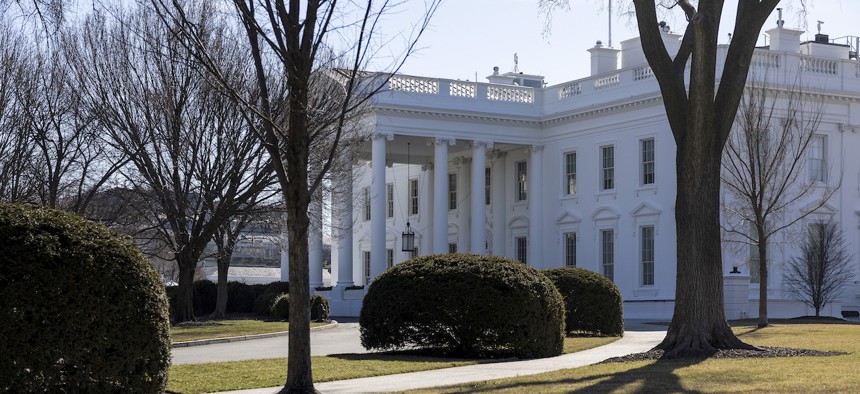
The Biden administration has focused much of its work over the last two years on making it easier for agencies to staff up. Anna Moneymaker/Getty Images
Workforce and Service Delivery Still Front and Center in Biden’s 2024 Budget
The White House’s fiscal roadmap continues to focus on rebuilding the federal workforce and making it easier to obtain services from agencies.
President Biden’s $6.9 trillion budget proposal for fiscal 2024, released Thursday, continues the administration’s focus on rebuilding the federal workforce and ensuring that federal agencies are a “model employer” that can compete with the private sector for talent.
In addition to surge hiring measures, the Biden administration has focused much of its work over the last two years on making it easier for agencies to staff up through initiatives to simplify hiring and by making government jobs more appealing through pay, benefits and workplace flexibilities like telework and remote work. That trend continues with this year’s budget plan.
“To continue to deliver for the American people in the 21st century, the federal government must win the competition for highly skilled talent,” the administration wrote. “The budget makes investments that would advance the first [President’s Management Agenda] priority—strengthening and empowering the federal workforce—by: expanding federal strategic agency hiring capacity, prioritizing robust early-career pipelines; implementing strategic diversity, equity, inclusion and accessibility plans; and reimagining Federal Executive Boards to foster coordination and collaboration amongst senior executives outside of Washington, D.C., to better communicate and execute the administration’s management and workforce priorities across regions and communities.”
On hiring and recruitment, the administration said that its budget would support efforts by the Office of Personnel Management to expand its Hiring Experience Office, which is focused on efforts to streamline federal hiring with measures like shared certifications and skills-based hiring, as well as further expansion of the use of paid internships across government. The budget would provide OPM with an additional $78 million over its 2023 funding levels to boost strategic human capital management and workforce planning.
Biden’s proposal continues the president’s call for the government to be a model employer by proposing a 5.2% average pay raise for federal workers—the highest proposed pay increase since 1980, although less than the 8.7% requested by some Democrats and union leaders—and advancing legislation to block future efforts to strip tens of thousands of federal workers of their civil service protections through initiatives like Schedule F. Additionally, the plan includes a $1.1 billion increase in funding for the Transportation Security Administration so that the agency can continue implementation of an initiative aimed at moving its workforce to a pay scale and personnel management system equivalent to the General Schedule.
Throughout the budget are proposals aimed at improving the delivery of government services to Americans. Unlike Republican proposals to improve customer service, like simply reverting agency telework policies to what they were in 2019, before the COVID-19 pandemic began, the Biden administration relies on a combination of increased staffing and dramatically expanding how Americans can access benefits and other services:
- $6.6 million for OPM to modernize its system to process federal employees’ retirement claims, including expanding a pilot program by which feds can apply for retirement online
- $163 million for the State Department to develop a system for Americans to obtain passport services online
- $1.4 billion in addition funding for the Social Security Administration to expand staffing and improve customer service at the agency’s field offices, state disability determination services and teleservice centers.
“The federal government must deliver a simple, seamless and secure customer experience, on par with, or more effective than leading consumer experiences,” the budget states. “Irrespective of age, location, digital savvy, disability, education or English proficiency, the American people deserve a government that understands who they are, what they need and how best to deliver for them. The budget supports increased mechanisms for providing feedback and input from the public into the work of government, hiring for the skills and expertise required to conduct human centered design and digital service delivery, and the formation of interagency teams to tackle pain points from the lens of how people experience government programs at critical moments in their lives.”







